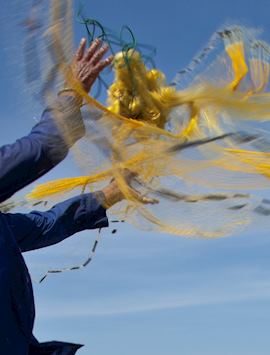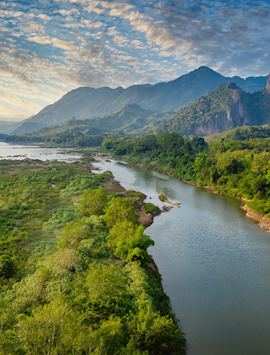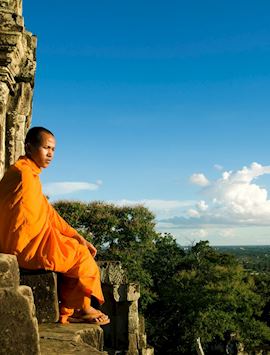By Southeast Asia specialist Anna
Tangled jungles or lantern-lit streets? Honeyed sands or lush Mekong riverbanks? Rich, creamy curries or light, brothy noodle soup? A trip that combines Thailand and Vietnam means you can easily experience the best of both worlds — that’s why it’s one of my favourite destination duos.
Why combine Thailand & Vietnam?
Southeast Asia has long been a region that tempts travellers to explore more than one destination in a single trip. While Thailand and Vietnam aren’t quite neighbours, you can fly direct between them in under two hours. Their cultures, cuisines, and landscapes complement each other well, giving you the opportunity to explore an eclectic mix of cities, rainforests, rivers, mountains, and beaches in one trip.
Below, you’ll find a few of my top Thailand and Vietnam holiday ideas, but there are many more ways I can help you tie the two countries together based on your personal interests.
1. Cultural Vietnam & Thailand’s beaches

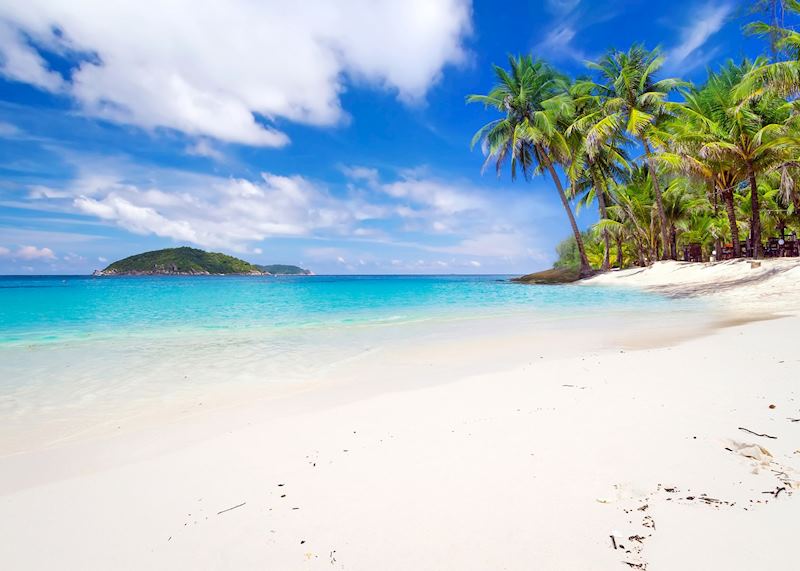
Vietnam’s white-sand shores are undeniably beautiful and, oftentimes, very remote. But, if you’re looking to balance relaxation and exploration, Thailand’s many beach destinations offer more to do and see in between lounging. I recommend soaking up Vietnam’s cultural highlights first before flying to Phuket to wrap up your trip with a Thai beach stay.
Starting in Vietnam’s capital, Hanoi, you’ll work your way down the country, stopping at cultural hubs like Hue, Hoi An, and finally, Ho Chi Minh City (which you’ll still hear many locals calling Saigon). Along the way, you could join a privately guided tour of Hanoi’s Temple of Literature, which houses the country’s oldest university, cycle to a rural village on the outskirts of Hue to sit down for dinner with a local family, or cruise the Mekong to glimpse life along the riverbanks near Ho Chi Minh City.
I’ll also find hotels that further wrap you in the culture and history of each city. For example, there’s the Sofitel Legend Metropole in Hanoi’s French Quarter, which still has an underground 1960s bomb shelter, or the Ancient Hue Garden Houses, which hark back to the Mandarin-style homes once lived in by Vietnam’s imperial nobility.
From Ho Chi Minh City, it’s just a two-hour flight to Phuket. There are, of course, many beaches here, but I suggest heading a little further north to Khao Lak. It’s much more peaceful, with just a scattering of coastal hotels looking out over its azure waters, yet there’s still plenty to do nearby.
Depending on where you stay, you could take a private Thai cooking class with a local chef, visit the nearby Similan Islands to dive with zebra sharks and moray eels, or enjoy a boat trip, sipping cocktails as the sun sets over the water. Of course, simply stretching out on the powder-soft sand is a must, too.
2. Thailand & Vietnam for food lovers


Sweet, salty, sour, and spicy — both Vietnamese and Thai cuisine perfectly balance all four flavours. For me, comparing and contrasting their moreish dishes is one of the best reasons to combine the two in a single trip, and I can help you find the best food spots in each.
I recommend starting in Bangkok (often nicknamed the city that never stops eating) and then spending some time further north in Chiang Mai. From there, you can fly to Hanoi and make your way down the country for the final part of your gastronomic pilgrimage. In each city, I’ll pick hotels to enhance your food journey, whether it’s one with award-winning in-house dining options or somewhere close to plenty of sizzling street-food restaurants.
Part of the joy of this region is stumbling upon unassuming establishments that end up serving the most delicious pad thai or pho (noodle soup) you’ve ever tasted. But, for a little extra help, I find it’s worth heading out with a local who already knows the best spots.
In Bangkok, you can take a food-focused tuk-tuk tour of the city as night falls, or set out on a private walking tour of Chinatown, where you’ll taste a delectable blend of Thai and Chinese influences (I’m a big fan of the dumplings). You could also follow a food blogger to the best culinary haunts in Hanoi, join an artisan chef in Hue for lunch at her home, or zip from one restaurant to the next on the back of a Vespa in Ho Chi Minh City.
Eating is obviously the main aim of this trip, but I also like to sprinkle in a cooking class here and there so you can learn how to recreate your favourite dishes back home. You could try your hand at making Thai curry pastes from scratch in Chiang Mai, while a cooking school in Hue teaches you the art of “royal cuisine”, a nod to the city’s imperial heritage.
3. Outdoor adventure in Northern Vietnam & Thailand


From Vietnam’s dramatic mountain scenery to Thailand’s wildlife-rich forests, the two countries complement each other well if you’re looking for a more active trip.
Northern Vietnam in particular is ripe for adventure, so I suggest focusing the first part of your trip here. Flying into Hanoi, you can head straight for the towering limestone karsts of Halong Bay. Designated as a UNESCO World Heritage Site, it’s very busy here, so I prefer to glide past it on a cruise that pauses overnight in quieter Lan Ha Bay nearby — you’ll find similar karst-studded views, but with fewer boats around.
Ninh Binh is another destination sculpted by Northern Vietnam’s classic karst scenery. Here, you can cycle through flat rice terraces, take a gentle sampan ride along the cliff-flanked river, and climb to the top of Mua Cave for panoramic views of the jutting landscape below.
For mountain vistas and traditional stilted villages, head to Mai Chau next. I like staying at Avana Retreat for its views of the ribbon-like rice terraces that wrap around the mountainside. While there, you can join guided walks to traditional villages or embark on a more vigorous trek into the jungle.
Landscapes take pride of place on an active trip to Vietnam, so I suggest heading to Thailand’s Khao Yai National Park next for a good dose of wildlife. It’s the country’s oldest national park and protects an array of animals, from wild Asian elephants to gibbons and hornbills. During your time here, you can trek to waterfalls, visit a cave where millions of bats fly out in swirling formations each night, or head out after dark to spot nocturnal sambar deer, giant squirrels, and slumbering primates with a wildlife guide.
After an adventure-filled trip, I like to rest up on the tranquil palm-fringed beaches of Koh Samet. Unlike Khao Lak, there’s not much to do here other than relax, but I find that’s the perfect tonic after several days of extensive adventuring.
4. Grand tour of Southeast Asia
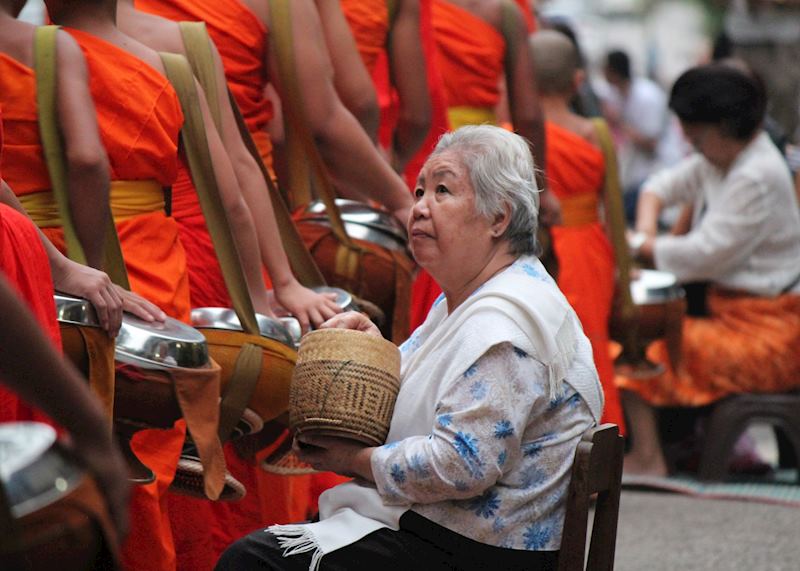
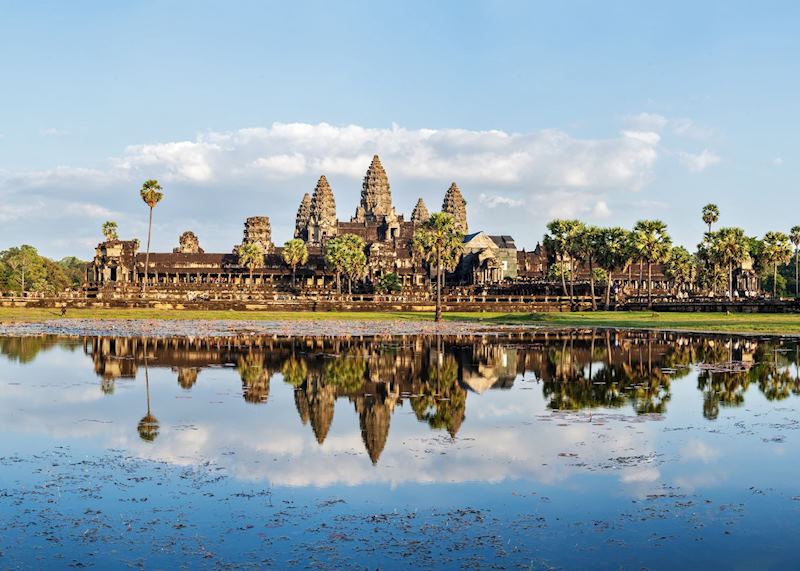
Of course, you don’t have to restrict yourself to just two countries. If you have more time, you can weave Thailand and Vietnam into a more extensive trip around Southeast Asia. One of my preferred routes loosely follows the Mekong River, journeying through Thailand, Laos, Cambodia, and Vietnam.
As you move by land, air, and water, you’ll uncover the intertwining and diverging histories of the region, as well as its mosaic of cultures, religions, and landscapes. Starting in Chiang Mai and nearby Chiang Rai, you’ll come across glittering temples, rice paddies, and rural villages perched on hillsides, before crossing over to Laos. This will be your first proper introduction to the Mekong, and a cruise on its waters will carry you past largely uninhabited, jungle-clad hills to the UNESCO World Heritage town of Luang Prabang.
Here, I can arrange for you to experience almsgiving, where hundreds of saffron-robed monks line up to receive food donations from local townspeople. As you perch on a wooden stool and wait in the near-pin-drop silence, your guide will teach you the correct way to make your own offering.
After time in Vientiane and Champasak, you’ll take a short flight over to Siem Reap in Cambodia. The temples of Angkor are the showstopper here — a vast complex of centuries-old Khmer buildings, some of which are partially engulfed by the surrounding jungle. There are many ways you could explore, from cycling tours that take you atop thick temple walls to photography walks that help you capture their beauty in just the right light. I’ll help you pick one that speaks to your interests.
From Cambodia’s capital, Phnom Penh, you can rejoin the Mekong for a cruise across the border into Vietnam. I recommend spending a night on board a converted rice barge as you make your way through the delta. It’ll give you the chance to soak up life along the river and sip cocktails as the sun gilds the water at twilight.
Best time to visit Thailand & Vietnam
The best time to combine Thailand and Vietnam is from November to April, when it’s generally hot and dry and the beaches are drenched in sun. Central Vietnam can be very wet during November and December, so if you’d like to avoid that, plan your trip for early in the new year instead.
Read more about trips to Southeast Asia
-
![Fisherman, Hoi An]()
-
![Mekong River near Luang Prabang]()
-
![Monk, Angkor Wat]()
Grand tour of Indochina: Laos, Vietnam & Cambodia
Laos, Vietnam, Cambodia and ThailandView this tour
Start thinking about your experience. These itineraries are simply suggestions for how you could enjoy some of the same experiences as our specialists. They're just for inspiration, because your trip will be created around your particular tastes.
View All Tours in Southeast Asia
